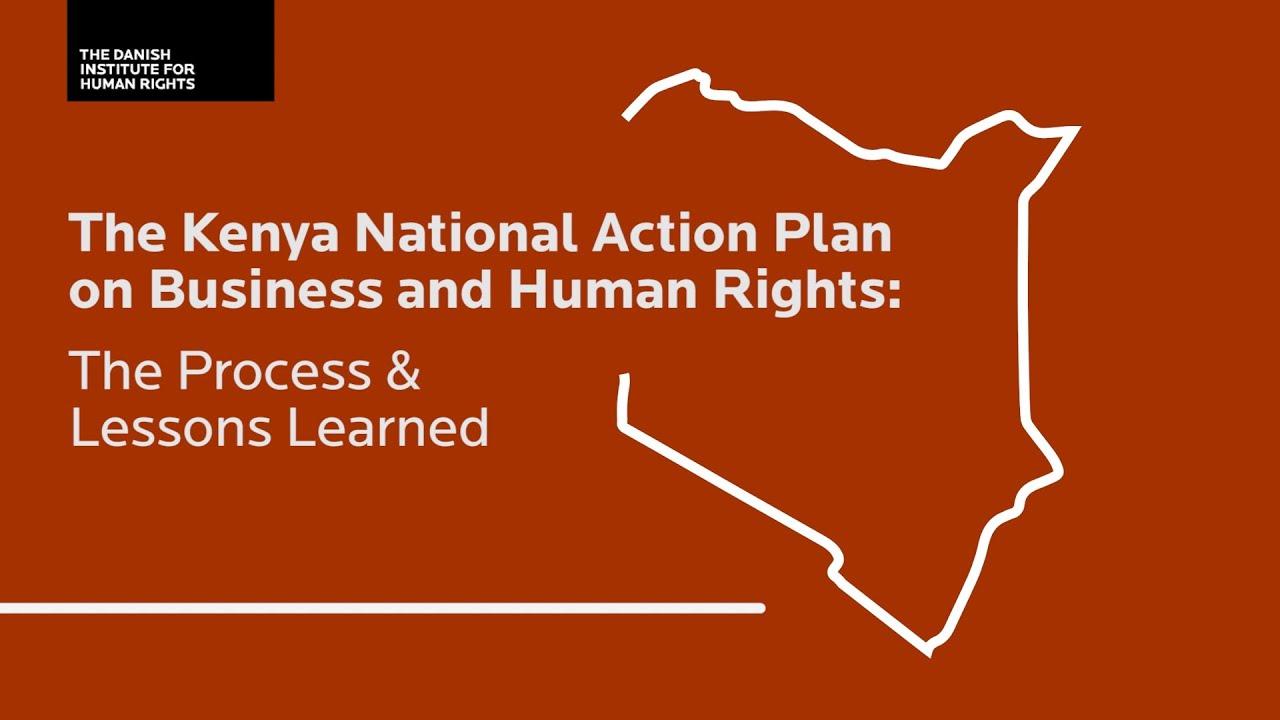
The Kenya national action plan on business and human rights – a case study on process, lessons learned and ways forward
Kenya is the first African country to develop a draft national action plan on business and human rights. National action plans ideally provide a structured and comprehensive framework for anchoring national regulation of business conduct in relation to human rights.
By reflecting on the development process of the Kenyan national action plan, this case study seeks to provide insights and lessons for other countries intent on developing a national action plan. The case study is relevant for state actors, national human rights institutions and their regional and international networks, civil society organisations, businesses and private sector organisations, trade unions and rights-holder groups. To identify successes and lessons learned, this case study has drawn upon interviews with key actors in the Kenya NAP development process, including: the Kenya National Commission on Human Rights; Global Compact Network – Kenya; the State Law Office and Department of Justice; Business and Human Rights Resource Centre; and Kenya Human Rights Commission, among others.
The process to develop the Kenyan NAP was led by the government through the State Law Office and Department of Justice with support from the Kenya National Commission on Human Rights. Stakeholder and rights-holder groups were prominently recruited into the national steering committee on the national action plan, the decision-making organ in the process. The steering committee brought together 13 institutions, organisations and agencies and stewarded the development of the action plan. It brought a sense of inclusion into the process, where roles were allocated to different stakeholder groups and decisions on the process made based on consensus.
The main steps in the development of the Kenyan national action plan were:
- The acceptance by the State of recommendation by Norway on the Universal Periodic Review (UPR), that Kenya should “[d]evelop a national action plan for the implementation of the Guiding Principles on Business and Human Rights”
- The development of a concept paper on the UN guiding principles on business and human rights to inform government policy intervention and use as an advocacy paper
- An official statement by the attorney general committing the government to develop a national action plan on business and human rights
- The establishment of a national steering committee on the national action plan
- The convening of a stakeholder forum on the development of a national action plan
- Conducting a national baseline assessment
- Stakeholder engagement on different themes in a range of different regions
- The drafting of the Kenyan national action plan.
The Kenya NAP Case Study reveals key lessons in the development of a NAP on Business and Human Rights.
First, the NAP process should be well resourced. Access to adequate financial resources enhances the reach and quality of the consultative processes. It also enables access to suitable technical and logistical support for the process.
Secondly, as was the case in the NAP development process of Kenya, decision-making on key process issues should be inclusive, bringing together different stakeholders and rights-holders under a central decision-making organ. It also underlines the need for transparency to generate commitment and confidence among the various actors in the process.
In addition, the consultation process should include all relevant stakeholders and rights-holders, while at the same time, addressing the unique challenges these different actors face in participating in consultations. As such, the mode of engaging participants during consultations should be structured to enhance their respective capacities to participate effectively.
Another key lesson points to the need of capacity building for the different participants in the process, to ensure that they adequately understand the utility of a NAP as a tool for addressing human rights, the NAP development process and the respective contexts for their participation.
A NAP on Business and Human Rights should be drafted in unequivocal language which clearly spells out enforcement and implementation obligations and responsibilities and assigns the same to the appropriate stakeholders. Moreover, the NAP should integrate gender and other context-specific considerations.
Lastly, because of the strategic role and function of national human rights institutions, they could play a central role in coordinating the NAP development process, while at the same time, providing technical support to the process. As in the Kenyan case, NHRIs are recognised as valuable independent experts by state and non-state actors, owing to their official mandate as both an advisory institution and as a watchdog on human rights.
The Kenyan NAP is yet to be officially adopted by the Kenyan cabinet. It is expected that once promulgated by cabinet, the State will facilitate a participatory process of developing comprehensive implementation and monitoring frameworks, including through developing: legislation, policy, guidelines and administrative and institutional positioning for the protection and promotion of human rights.
We strive to make the pdf versions of our publications etc. accessible for screen readers. If you experience any problems, please contact Digital Editor Stine Juhl Nielsen on stni@humanrights.dk

